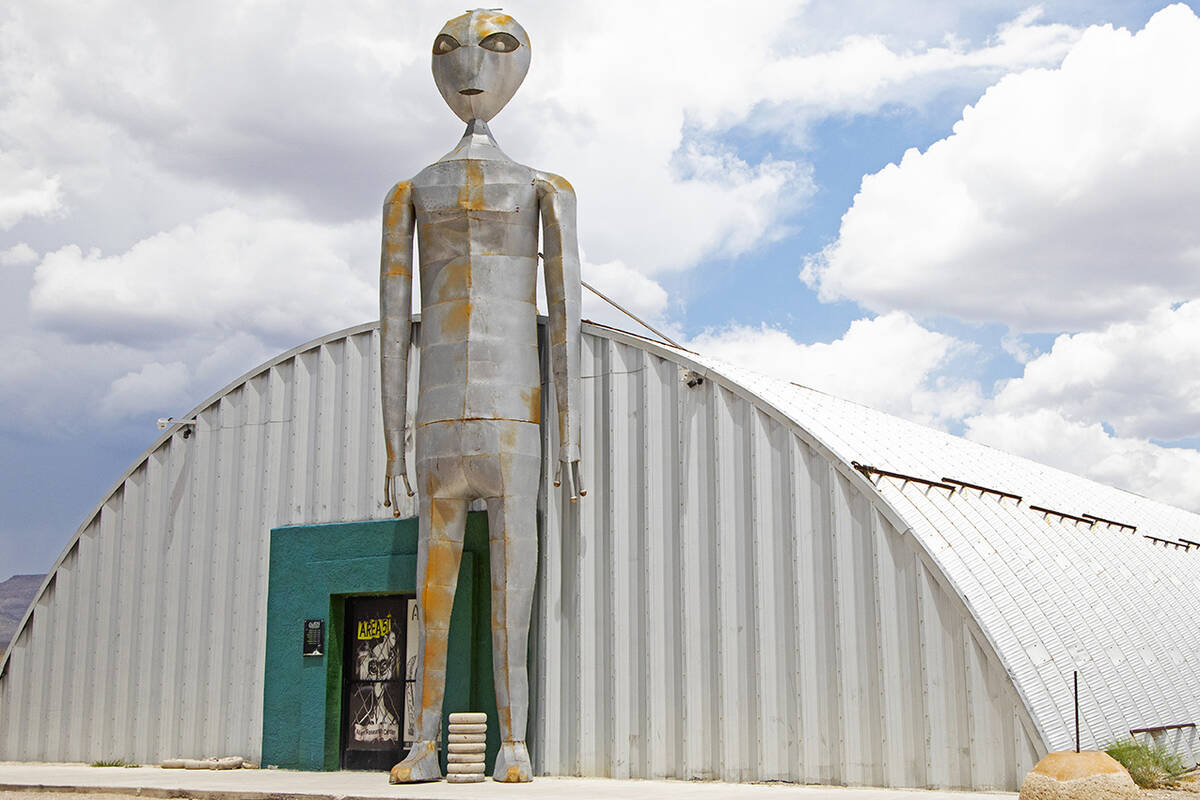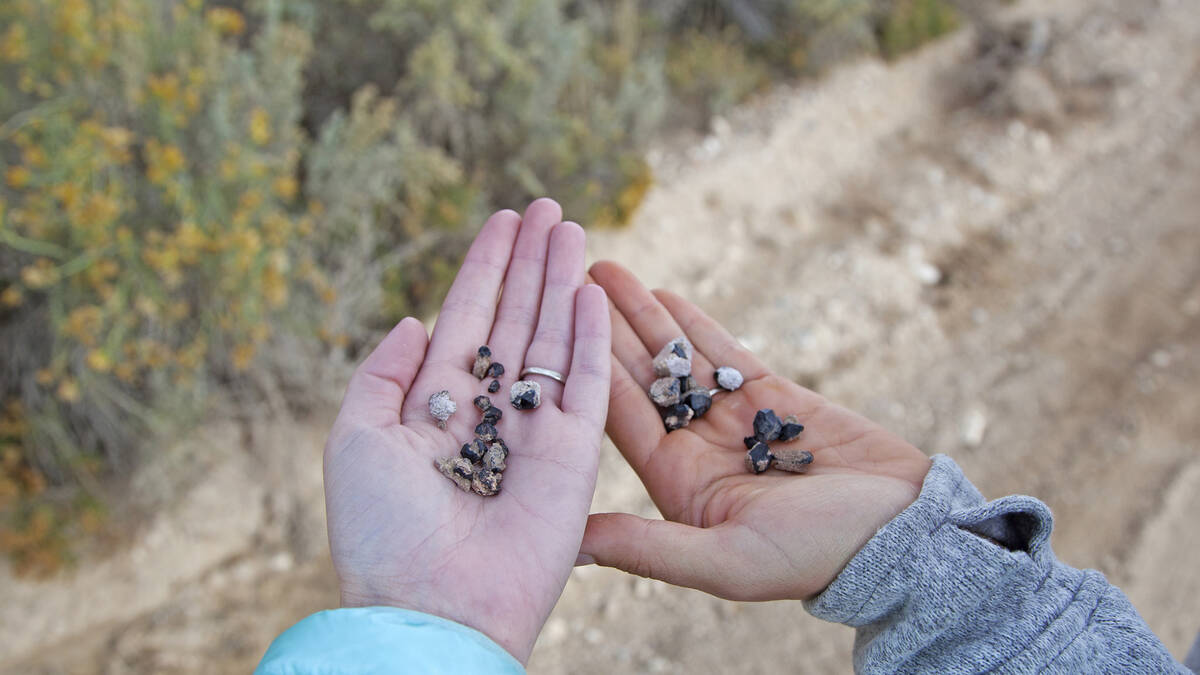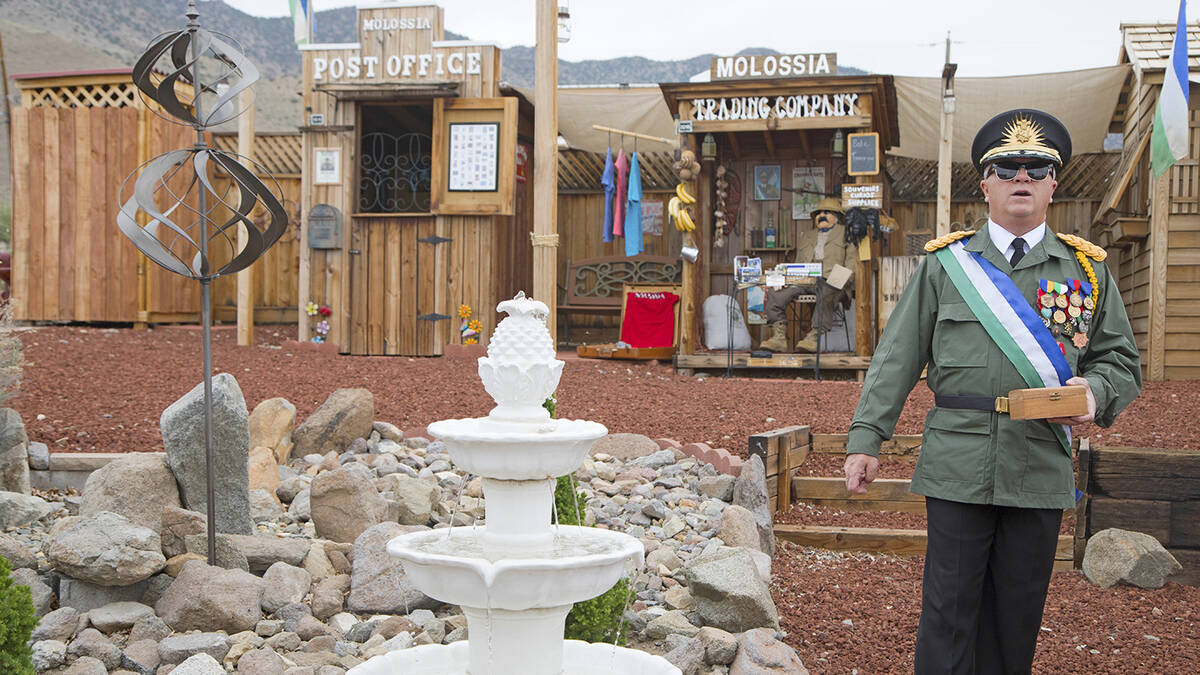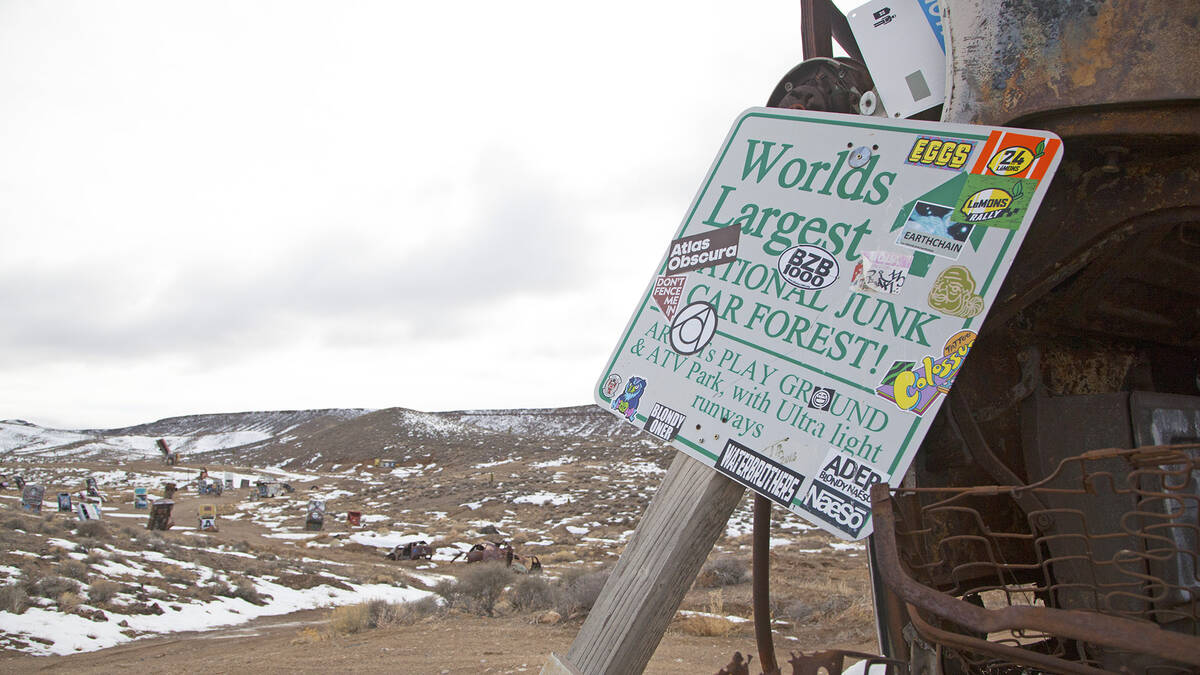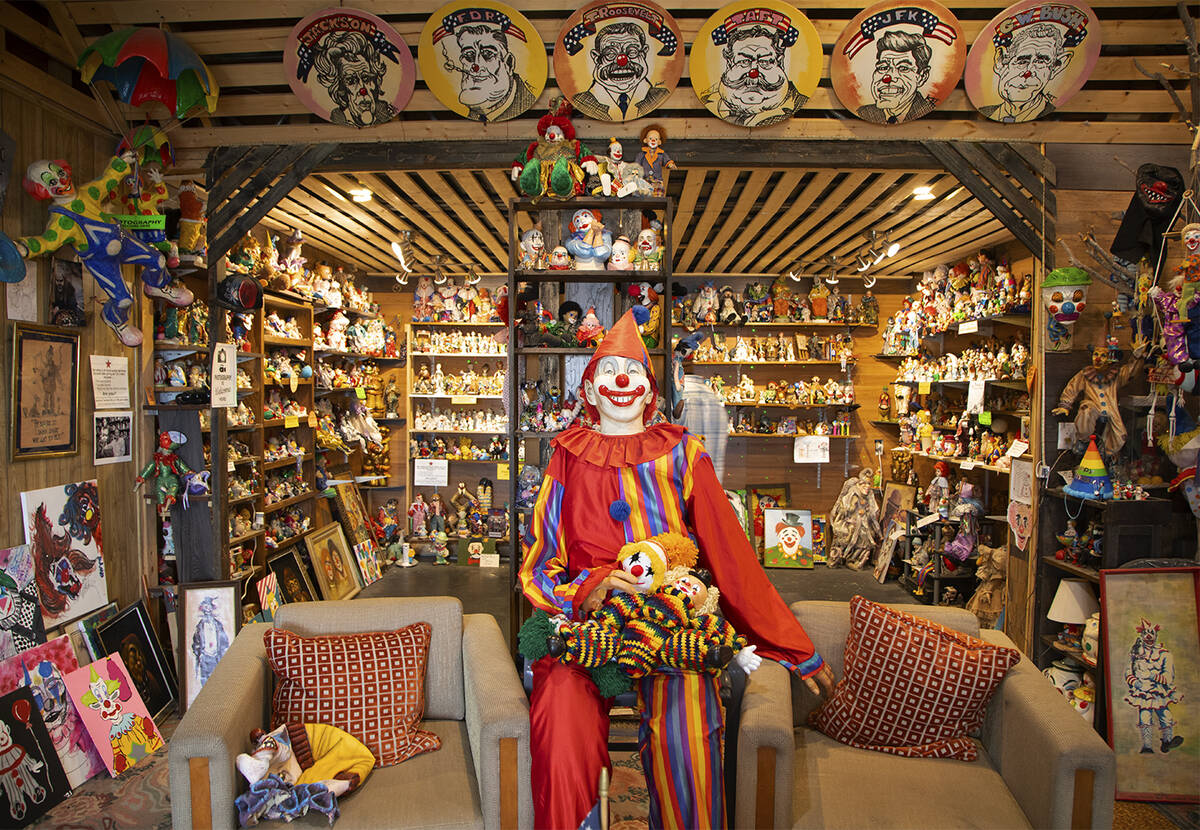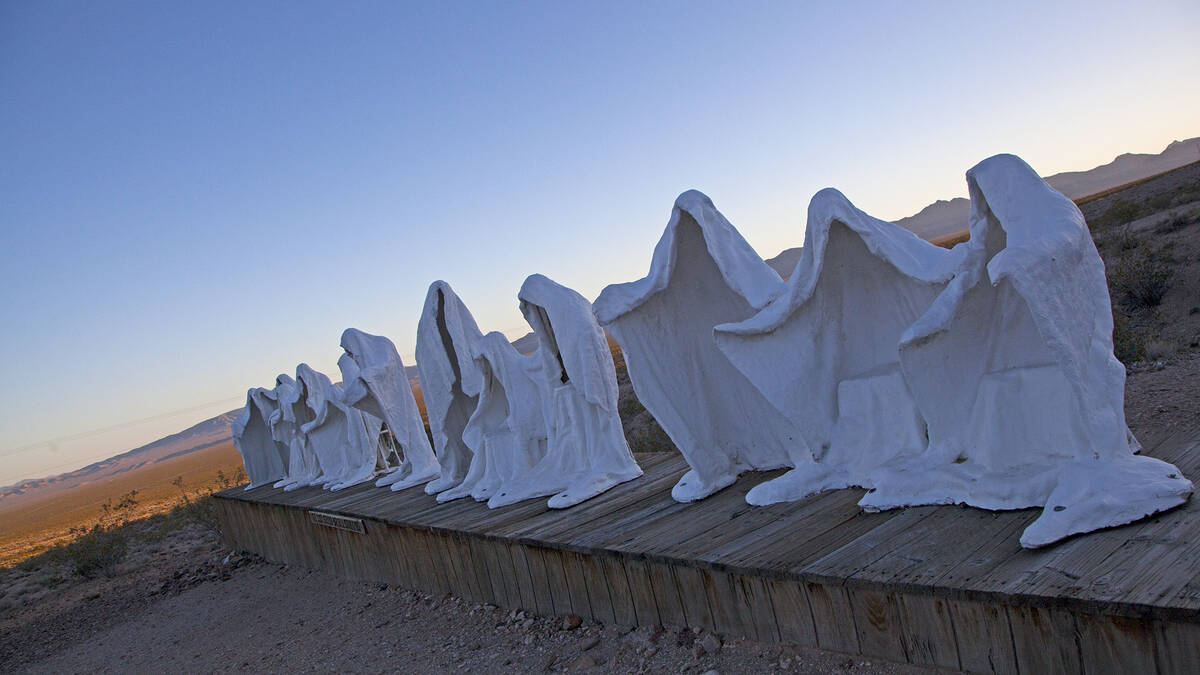Have you seen Nevada’s ‘7 Weirdest Wonders’?
A pair of open-air museums, an extinct volcano, a geyser and a creepy motel full of clowns have made Travel Nevada’s inaugural list of the state’s “Seven Weirdest Wonders.”
The seven rural attractions are being marketed to visitors by the Nevada Commission on Tourism and will be part of an ongoing promotion for the state.
The Commission on Tourism launched a spring campaign determined last year with a new emphasis of attracting visitors from Portland, Oregon and Chicago.
Mikalee Byerman, chief marketing officer for Travel Nevada, said those two cities were identified as having growth potential for the Nevada travel market by state consultants.
“Recent learnings from our study and audience data reinforce these recommendations,” Byerman said. “Now, we are moving forward with those plans, as our shifting budget is now determined for the rest of the fiscal year. We are routinely reviewing data to determine optimal audiences in drive and fly markets, but these were the two that rose to the top when factoring in research, access considerations and sentiment analysis.”
The state has held off on spending on promotions to attract tourists until leaders were confident that visitors were willing to travel again after the COVID-19 pandemic.
Attracting the curious
Now that travel confidence is returning, prospective visitors to the Silver State are being enticed to see seven things they won’t see anywhere else.
“We’re finding through our research that travelers are looking for places to visit that satisfy their curiosity, and this Weird Nevada list really highlights some of the attractions that are lesser known in the broader travel industry,” Tracie Barnthouse, public relations manager for Travel Nevada, said in an interview.
“These are places that only exist in Nevada so that makes them especially rare and appealing for people looking for great travel stories. There are so many great places and we couldn’t include all of them, but these are obscure places in our state,” she said.
Her favorite destination on the list: Garnet Hill, east of Ely.
“Where else can you go to find garnet gemstones all over the ground?” she said.
Surprised to be ‘weird’
A local resident was surprised that Garnet Hill made the “weird list,” thinking it may get even weirder in years to come.
“We think Garnet Hill is a pretty standard run-of-the-mill place,” said Shadrach Robertson, a tourism ambassador with the White Pine County Chamber of Commerce. “It’s BLM land. You go out and you dig your own garnets. Rockhounds enjoy going out there and digging up the mountainside and they get to keep whatever they find.”
There’s speculation that even more garnets could be exposed in the future, he said.
“I think it’ll be even weirder in a couple of years if and when the BLM blows up the top of the mountain to expose more garnets,” he said. “It’s speculative at best at this point, but the conversation for the last five years has been that it’s the plan to do that in the next three to five years.”
Seven wonders
Here’s the list of the seven “Weird Nevada” sites, in order of their distance from Las Vegas:
— Alien Research Center, near Alamo, 100 miles. The silver quonset hut in the middle of the desert has a two-story silver alien statue at its entrance and is the gateway to Nevada’s Extraterrestrial Highway, Nevada State Route 375, Area 51 and its nearest community, Rachel. The Alien Research Center is open 9 a.m. to 5 p.m., daily, and has a gift shop with alien apparel, hats, mugs, magnets and other knick-knacks.
— The Goldwell Open Air Museum, 4 miles west of Beatty off State Highway Route 374, 109 miles. Goldwell has seven large art structures, including a ghostly, life-size version of Leonardo da Vinci’s “The Last Supper;” a 25-foot pink woman constructed of cinder blocks; a 24-foot steel prospector and penguin; and a gleaming tangle of chrome car accessories. The 8-acre site was created by a group of Belgian artists, led by the late Albert Szukalski, who were drawn to the remote upper portion of the Mojave Desert to pursue artistic vision free from convention. It’s open to the public all day, every day, with no admission fee.
— The International Car Forest of the Last Church, near Goldfield, off U.S. Highway 95, 171 miles. Another open-air gallery, the car forest comprises more than 40 graffitied vehicles, most buried from the nose. Created by longtime Goldfield resident Mark Rippie who successfully sought to break the Guiness World Record for the world’s largest car forest, his efforts were later joined by artists Chad Sort and Zak Sargent. The area is open around the clock every day and has no admission cost.
— Clown Motel, 521 Main St., Tonopah, 198 miles. The motel has the largest collection of clown figurines — 2,000 — in the world onsite. The 31-room motel is adjacent to the Old Tonopah Cemetery, where many of Tonopah’s earliest silver mine workers were buried after they died in a mining accident — the Belmont Mine Fire of 1911. The Clown Motel motif was developed in 1985 by Leona and Leroy David, children of their father, Clarence David, a clown lover who left a collection of 150 clowns in his home.
— Garnet Hill, 6.4 miles east of Ely off U.S. Highway 50, 237 miles. The Garnet Hill recreation area was once an active volcano that erupted 32 million to 40 million years ago and littered the landscape with almandine, a type of semi-precious garnet gemstones. While it’s recommended to bring a shovel, rock hammer and gloves to pry garnets out of the surrounding rock, many are visible on the ground surface and do not require any excavation. Garnet Hill also is one of the best locations for a view of the gargantuan open-pit copper mine and colorful waste rock dumps of the nearby Robinson Mining District. The recreational area is open to the public at no charge.
— The Republic of Molossia, 226 Mary Lane Road, Dayton, 402 miles. Molossia has been designated an official, independent, sovereign country inside of Nevada for more than 40 years. The 6.3-acre country has its own bizarre laws — firearms, tobacco, plastic shopping bags, catfish, “fresh” spinach, missionaries and salesmen, onions, and walruses are considered illegal contraband — and its currency, the valora, is tied to the value of cookie dough. Visitors can even have their passports stamped, as Molossia is recognized as a micronation. His Excellency President Kevin Baugh and his first lady reside full time in the “Government House,” Baugh’s personal residence. Tours are offered once a month, April through October, usually on a weekend, and must be signed up for in advance. Tour dates can be found on the official Republic of Molossia website.
— Fly Geyser, off State Route 34 near Gerlach, 477 miles. The manmade geyser was created in the 1960s when a geothermal energy company attempted to tap the hot springs of the Hualapai Thermal Flats and inadvertently created a 12-foot calcium carbonate cone spewing 200-degree water. The geyser constantly sprays, depositing minerals and enabling growth of multi-colored algae on its surrounding natural terraces. In 2016, the non-profit Burning Man Project purchased the Fly Ranch Geyser and ranch, offering limited public access tours to the geyser and surrounding wetland ecosystem. Friends of Black Rock-High Rock docents accompany visitors in small groups, a minimum of 10, for a 2.5-hour tour of the grounds. Tours are $43 for adults and free to children 12 and under.
Contact Richard N. Velotta at rvelotta@reviewjournal.com or 702-477-3893. Follow @RickVelotta on Twitter.



